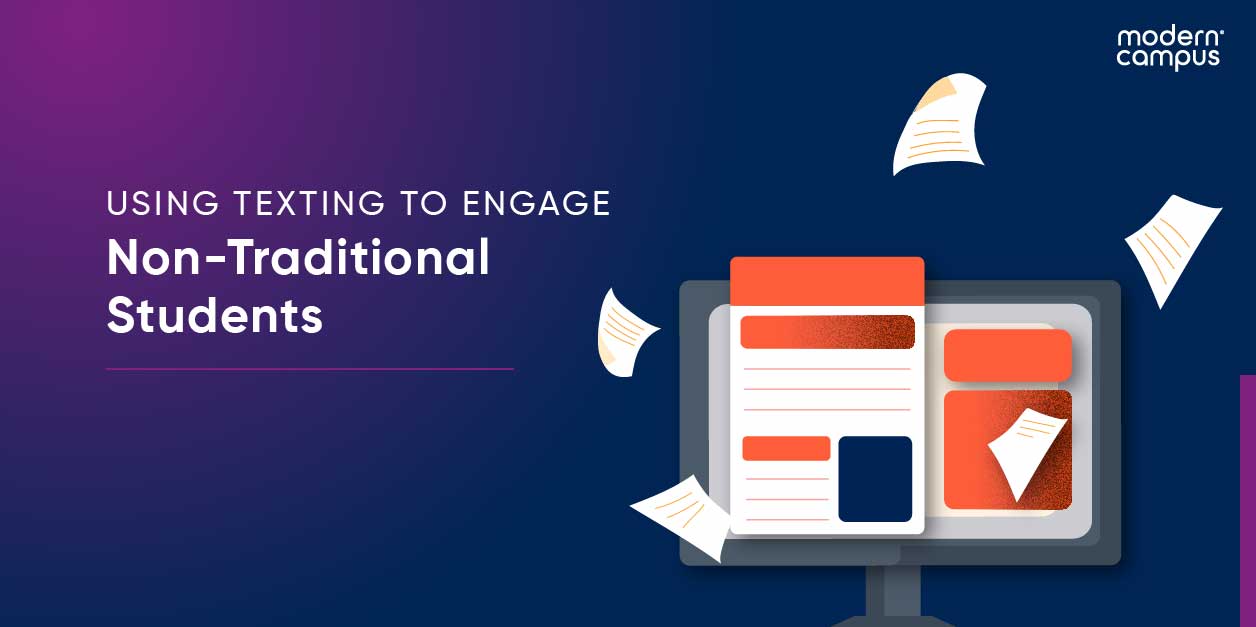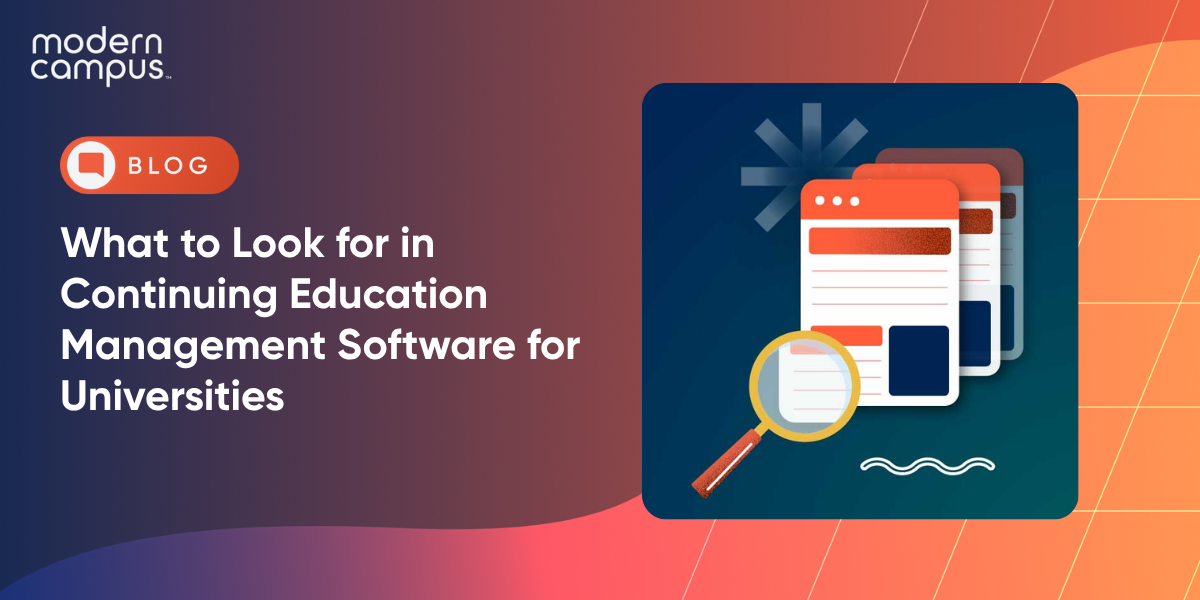No Good Decisions Without Good Data
Not everyone’s a data scientist. Given a document brimming with numbers, even the most agile leaders struggle to make sense of the figures; opting instead to pass them on to “the number people”.
20 years ago, this would’ve been perfectly reasonable. But just as there’s no excuse for puzzling over the capital of Uruguay when Google is only a tap away, there’s no longer any reason for division leaders to be ignorant of data that should be close at hand.
Data-based decision making is at the heart of any successful business, whether it’s a corner store or a college. Unfortunately for Continuing Education divisions, this information is frequently out of reach or incomprehensible to the people that need it most: Main campus systems aren’t typically built to collect clean data for non-traditional divisions, leaving CE leaders flying blind. Especially with non-traditional education taking the stage as “the new normal”, not having clear markers for your school’s performance is like navigating the Bermuda Triangle by holding a finger up to the wind. Bold, but you’re not going to end up where you want to be.
Lacking easily readable metrics, non-traditional education leaders are often unaware of the division-growing decisions that’ve slipped through the cracks. Having access to that data means leaders can spot areas of attention at a glance and call the shots accordingly.
Here are four roadblocks to good decision-making, and how leaders can leverage the corresponding data to address them.
1. Not Reading the Room
Give the people what they want.
Unless you don’t have easily readable metrics illustrating what they want, in which case, puff out your cheeks and blow a raspberry.
The days of cobbling together a course, opening the doors and watching the seats fill up are gone. Where once a student’s choice of program hinged largely on its affordability and their proximity to the campus, today’s learners are choosing from a much wider plate of options to accommodate an increasingly specialized workforce. Russell Winer, William H. Joyce Professor of Marketing at the Stern School of Business in New York, told the EvoLLLution that the current “option paralysis” means many students aren’t even likely to pick the right program for them.
“The number of choices, especially at the college level, is overwhelming and can result
in students not necessarily making the best choices,” Winer said, adding that the
onus falls on schools to set themselves apart in their offerings. “It’s more and more
important for schools to develop a sound point of difference or what we call a value
proposition to try to get through a quarter of all the schools on contact.”
Understanding course demand also means no more eight-person classes in 30-seat rooms.
Non-traditional divisions need to cater to these preferences if school-based learning is expected to keep up with the legions of free educational resources online. Having historical data for all past programs and courses at the ready ensures resources are being allocated properly, and classes offered at the right times. Michelle Giovannozzi, Director at Center for Executive and Professional Education at Portland State University, told the EvoLLLution that divisions that properly collect and analyze demand are better equipped to deliver leading edge programs.
“Collect and analyze data on enrollment trends, individual employer requests, and alumni employment to gauge demand for specific programs, and then adjust quickly when demand shrinks in one area and emerges in another,” Giovannozzi wrote.
With digestible data on hand, you may find that you’re over-offering courses—holding a course every single term when it’s only popular in one. With that insight, you’d know to move that course to just one term and would have more students applying to that time slot.
Understanding course demand also means no more eight-person classes in 30-seat rooms. Program administrators know to offer such a class only when it’s most popular, saving the bigger spaces for bigger turnouts. Consolidation is the name of the game: No need for three sections if there are fewer students in the room than dry-erase markers.
2. Sending a Human to Do a Computer’s Job
The argument against leaving certain tasks to machines makes less sense every day—and with every missed payment or enrollment mishap, it weakens.
Staff are people, and people make mistakes. In the case of expensive investments like higher education, those mistakes can be the difference between a long-term student and a lost prospect.
Carolyn Young, Director of Continuing Studies at Western University (WCS) said in an interview that staff mistakes were everywhere before WCS automated certain processes.
“One of the issues with manual processes was the constant risk of human error,” she said. Promising a seat in a full course or sending out the wrong information to waitlisted students “negatively impacts the customer experience,” Young said.
Computers—know-it-alls that they are—produce the same result every time with the right automation. It reduces the chance of human error and gives efficiency a boost by allowing staff to focus their efforts on critical work. You can set an automation to pay instructors as soon as their students have been graded; set one to notify students any time a full program gains a free seat; another to let them know when a course matching their interests has just opened.
Give in to the machines and give your staff a break.
3. Winging It
It’s nice to look out of your windshield as you drive. Seeing precisely where you are, where you’re heading and what obstacles surround you is the only way to make appropriate decisions.
Not having access to your division’s performance in real time is driving with a tarp across your windshield. It’s all best guess in the moment, with the results to be assessed later.
Most campus management systems are built to support credit bearing programming, meaning they rely on cohorts and semesters to track student progress. For non-traditional education, it’s rare institutions can report on their numbers with confidence. Young at WCS said main campus and CE management systems don’t work together, which is a roadblock to innovation.
Enrollment trends, top financial performers, student purchase histories/trends, facility use, student address mapping, finance tracking… these are key to knowing where to place your attention if growth is your aim.
“The systems don’t recognize each other’s language,” Young said. “For example, some of the reports that we have to send over still need to be entered
manually because there’s not an automated process.”
Real-time reporting tools pull the tarp off. Enrollment trends, top financial performers, student purchase histories/trends, facility use, student address mapping, finance tracking… these are key to knowing where to place your attention if growth is your aim. Instant analytics let you understand the performance of your programs, laying the groundwork for new ones when you see which ones are getting the most interest.
4. All Paint, No Picture
While figures alone are useful to staff who don’t mind sifting through raw statistics, it’s better to have them compiled in a visual format that anyone can understand. Not only does it take the legwork out of finding out how many students are enrolled in Advanced Golf Management, but it makes it easy to appeal to senior leadership when it’s decision time. Executives don’t often have time to spool through the details, so having clear visual indicators gives any decision another leg to stand on. Bill McClure, Executive Director of Continuing and Professional Education at University of Massachusetts Amherst, told the EvoLLLution it’s administrators’ duties to cut to the chase.
“They’re busy people with a lot of important issues on their plate. They need us to make their professional lives easier, resolve issues before they land in their office, understand the ‘big picture’ of the campus and not be part of the problem,” wrote McClure. “The CE unit needs to collect, analyze, format, interpret and disseminate data regarding its results to the campus’ senior leadership in terms that they appreciate and understand.”
To a division leader, a spreadsheet full of numbers says, “Compare these numbers to the other numbers”. Conversely, a bar graph showing your top ten courses for enrollment says, “The numbers have been compared. Have a coffee and make your decision.”
This ease of reference makes getting up to speed a breeze. A couple clicks in, a marketing strategist can run the reports on enrollment transactions in the past 24 hours and know when to bump up the school’s promotional efforts.
There’s lots to learn about who’s enrolled as well. Students often provide auxiliary information about themselves that, in a Google-esque fashion, can be leveraged to provide insights into their preferences and behaviors. Personalization isn’t just an add-on, either: Then-Dean of Enrollment Services at Rio Salado College, Rachelle Clarke told The EvoLLLution that the student consumer has come to expect a service that’s tailored to their needs.
“You can’t have people in an Amazon-like environment everywhere they go and then expect them to be satisfied with a non-Amazon experience at their college,” said Clarke.
Employers, communication preferences, goals, interests – when you know a student works in HR, responds best to emails and is looking to buff up their soft skills, it makes that afternoon email about your new Conflict Resolution certificate land more smoothly.
Good Data Means Good Decisions
It’s not the 90s anymore. Business analysts no longer bear sole responsibility for understanding your institution’s metrics. It falls on administrators to know which way the wind is blowing as well.
The capacity to maintain and grow enrollment numbers relies on the ability to evaluate and utilize the data at hand. The ground beneath higher education is shifting, and demand is as relentless as a stock ticker. Prospects have limitless choices before them, and administrators need constant visibility of all aspects of their division’s performance if they want their institution to stand out.
Last updated: February 1, 2021



